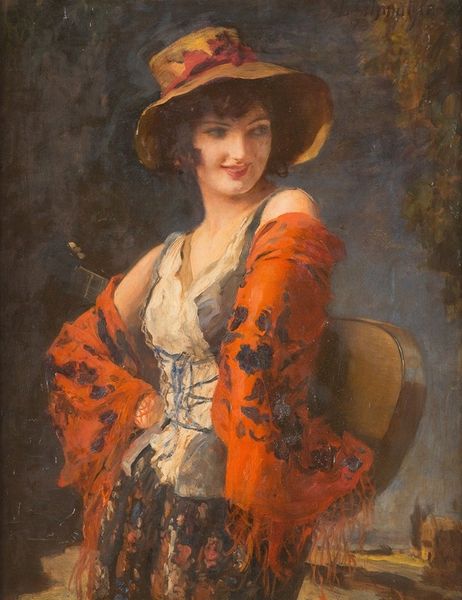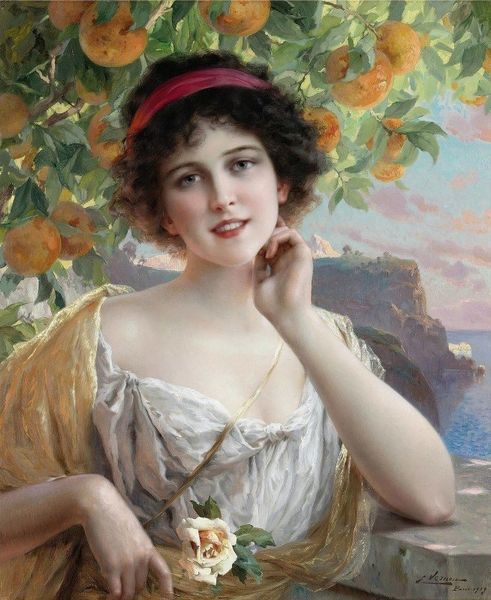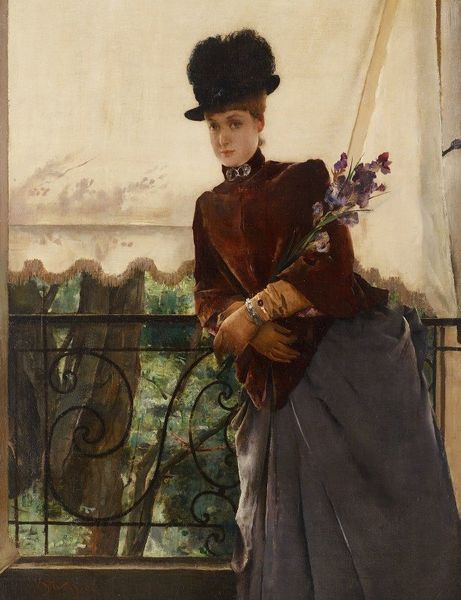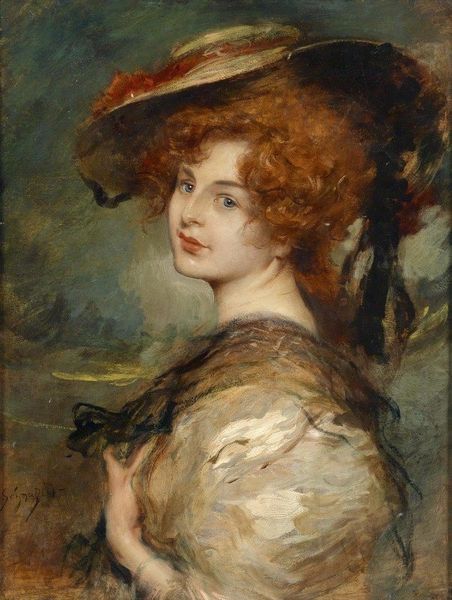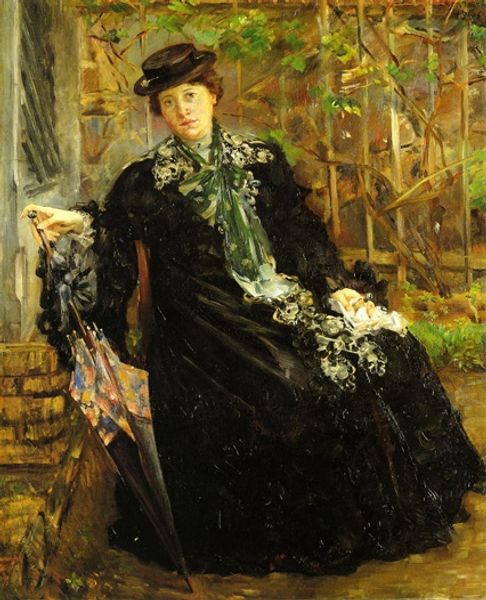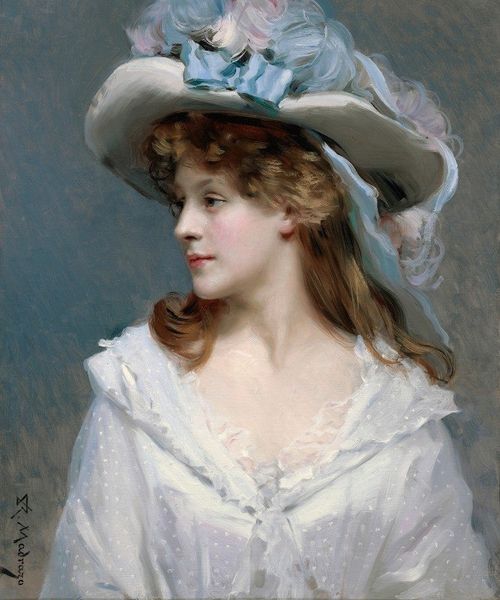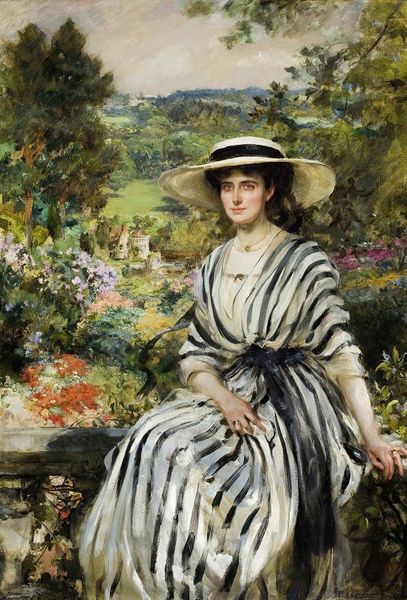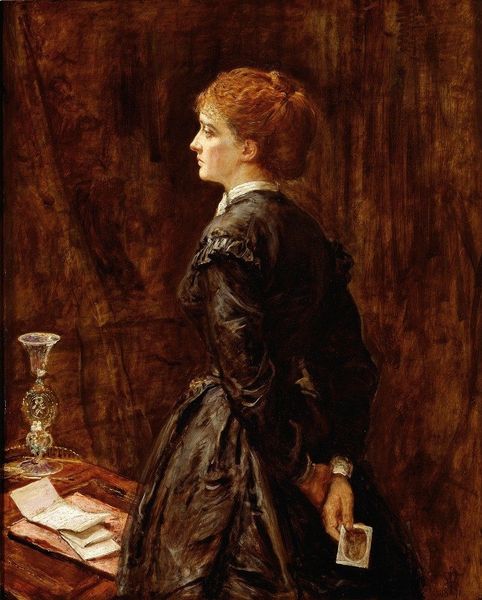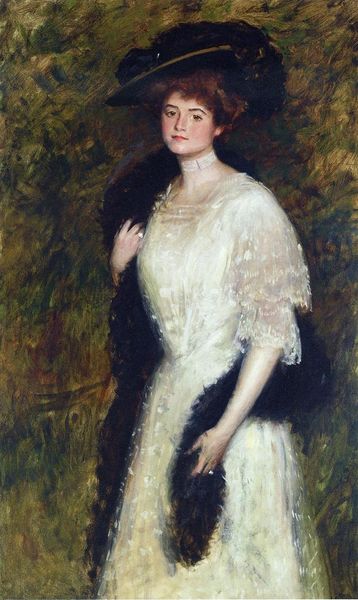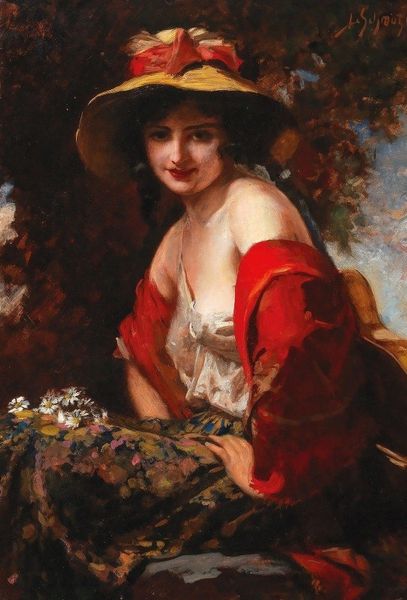
Type of Beauty: Portrait of Mrs. Kathleen Newton in a red dress and black bonnet 1880
0:00
0:00
jamestissot
Private Collection
Copyright: Public domain
Editor: We’re looking at "Type of Beauty: Portrait of Mrs. Kathleen Newton in a red dress and black bonnet," an oil painting made around 1880 by James Tissot. She appears contemplative, gazing off into the distance, lost in thought. What strikes you about this piece? Curator: Initially, the interplay between light and shadow arrests the eye. Tissot’s command over oil-paint application produces a dynamic textural contrast: consider the matte density of her black bonnet versus the shimmering fluidity of the red dress. Further, analyze how the structure employs a deliberate tension between the meticulously rendered details of her face, juxtaposed with the comparatively looser brushwork describing the floral background. Editor: It's interesting how the flowers behind her aren't as sharp. Is he focusing our eye? Curator: Precisely. Semiotically, the blurred flora serves to foreground the figure, almost isolating her. Notice the chromatic relationships: the dominant reds subtly echoed in both the bonnet and her dress establish visual consonance, balanced against the muted greens and yellows. The tactile richness achieved in rendering the fur further augments the sensory impact, no? Editor: I see how those red accents throughout tie it together. Is the fur adding texture important? Curator: Most certainly. It introduces a layer of decadence, enriching the surface. Think of the composition structurally: Tissot expertly manipulates verticality, directing the gaze upwards toward her face, effectively guiding interpretation. Editor: That makes sense! I didn't notice how my eye was always drawn back to her face. Thanks for helping me notice all the textures and the way Tissot leads our eye through the piece! Curator: Indeed. The strength of this work resides not just in its subject, but in the refined handling of the medium and the artful arrangements of its components, elements contributing to the painting’s inherent aesthetic value.
Comments
No comments
Be the first to comment and join the conversation on the ultimate creative platform.

